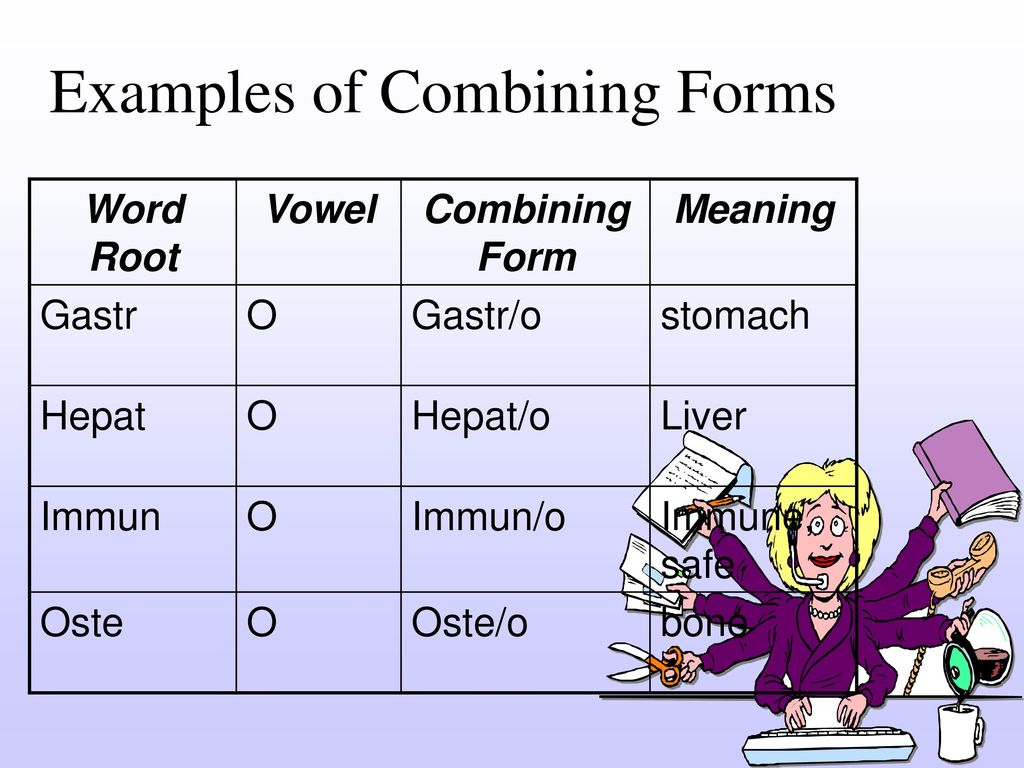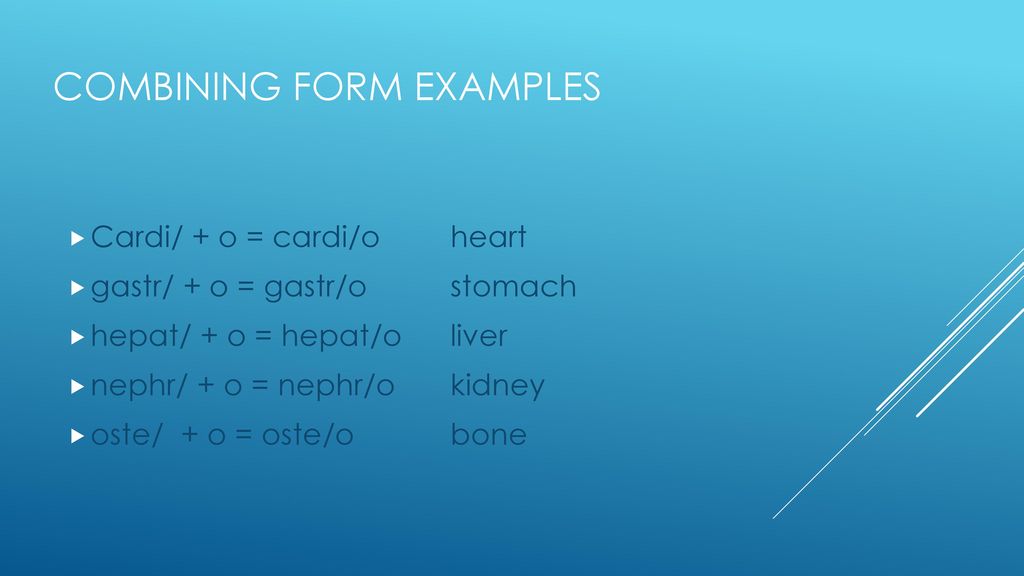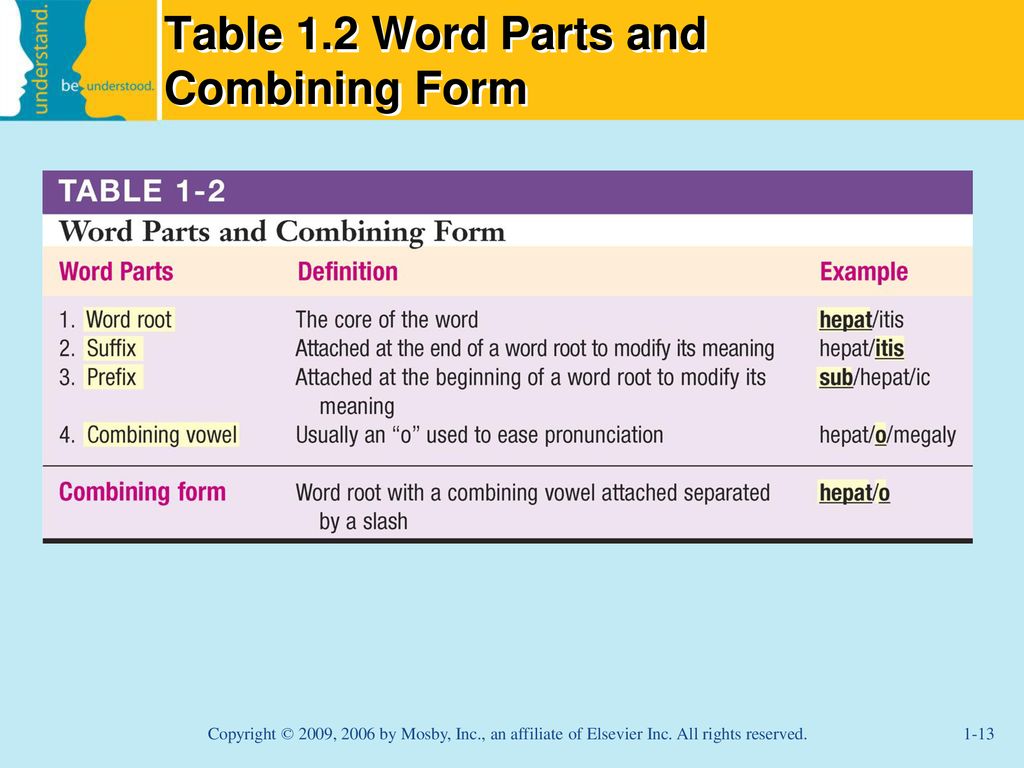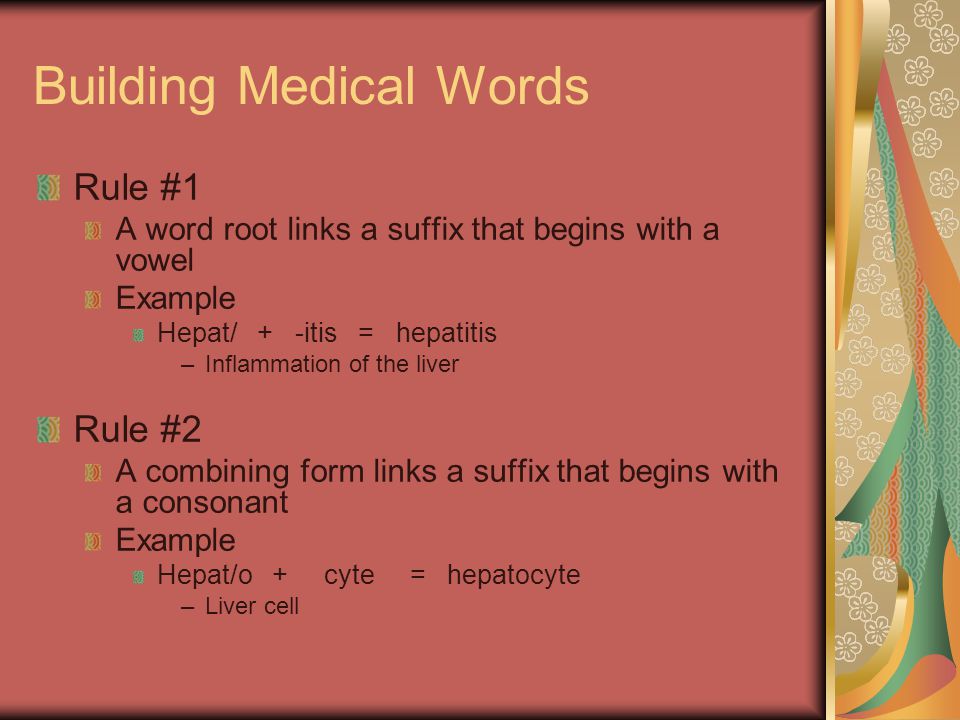The Combining Form Hepat O Means

In the intricate language of medicine, seemingly small word parts unlock vast domains of knowledge. Deciphering these linguistic keys is crucial for healthcare professionals and anyone seeking a deeper understanding of human anatomy and physiology. One such key is the combining form "hepat/o," a fundamental element in medical terminology related to a vital organ.
This article delves into the meaning of the combining form hepat/o, explaining its origin, usage, and significance in medical terminology. We will explore various medical terms incorporating hepat/o, providing context and clarifying its role in diagnosing and understanding liver-related conditions. Furthermore, we'll examine the importance of understanding medical terminology in healthcare and its implications for patient care and communication.
Unlocking the Meaning: Hepat/o and the Liver
The combining form hepat/o originates from the Greek word "hepar," meaning liver. In medical terminology, hepat/o serves as a prefix indicating a direct relationship to the liver, the largest internal organ in the human body. Understanding this root is paramount for interpreting a wide array of medical terms concerning liver health and disease.
The liver, located in the upper right quadrant of the abdomen, performs numerous critical functions. These include filtering blood, producing bile for digestion, storing glycogen for energy, and synthesizing proteins essential for blood clotting. Given its diverse roles, the liver is susceptible to various diseases and conditions, making the understanding of hepat/o-related terminology essential.
Common Medical Terms Using Hepat/o
The combining form hepat/o appears in a multitude of medical terms, each describing a specific condition, procedure, or aspect of liver function. Understanding these terms allows healthcare professionals to accurately diagnose, treat, and manage liver-related ailments. Let's explore some common examples.
Hepatitis, perhaps the most recognizable term, refers to inflammation of the liver. This inflammation can be caused by viral infections (hepatitis A, B, C, D, and E), alcohol abuse, certain medications, or autoimmune diseases. Different types of hepatitis manifest with varying degrees of severity and long-term consequences, highlighting the importance of accurate diagnosis and treatment.
Hepatomegaly describes an abnormal enlargement of the liver. This condition can be a symptom of underlying liver diseases, such as hepatitis, cirrhosis, or liver cancer, or even systemic conditions like heart failure. Determining the cause of hepatomegaly is crucial for guiding appropriate medical intervention.
Hepatocellular carcinoma (HCC) is the most common type of liver cancer. It arises from the liver cells (hepatocytes) themselves. HCC is a serious condition often associated with chronic liver diseases like cirrhosis and hepatitis B or C.
Hepatic encephalopathy is a neurological disorder caused by liver failure. When the liver is unable to properly filter toxins from the blood, these toxins can accumulate in the brain, leading to cognitive impairment, altered consciousness, and coma. Management of hepatic encephalopathy focuses on reducing toxin levels and supporting liver function.
Hepatologist refers to a medical doctor specializing in the diagnosis and treatment of liver diseases. These specialists possess extensive knowledge of liver anatomy, physiology, and pathology, enabling them to provide comprehensive care for patients with liver disorders.
The Significance of Medical Terminology
Proficiency in medical terminology is crucial for effective communication among healthcare professionals. Accurate and precise language ensures that everyone involved in patient care understands the patient's condition, treatment plan, and potential complications. Misinterpretation of medical terms can lead to errors in diagnosis, medication administration, and surgical procedures, potentially jeopardizing patient safety.
Beyond professional communication, understanding medical terminology empowers patients to become active participants in their own healthcare. When patients understand the terms used to describe their condition and treatment options, they can ask informed questions, express their concerns, and make shared decisions with their healthcare providers. This promotes a sense of control and ownership over their health, leading to better adherence to treatment plans and improved outcomes.
Furthermore, medical terminology provides a standardized framework for documenting patient information. This standardization allows for consistent data collection and analysis, which is essential for research and quality improvement initiatives. By using a common language, healthcare professionals can contribute to a growing body of knowledge that benefits patients worldwide.
Future Directions: Enhancing Medical Terminology Understanding
The field of medical terminology is constantly evolving to reflect advances in medical science and technology. New diseases are identified, new treatments are developed, and new terms are coined to describe these innovations. Therefore, ongoing education and professional development are essential for healthcare professionals to stay abreast of the latest developments in medical terminology.
Technology plays an increasingly important role in enhancing medical terminology understanding. Online resources, mobile apps, and interactive tutorials provide accessible and engaging ways to learn and review medical terms. These tools can be particularly helpful for students and healthcare professionals who are new to the field or who need to refresh their knowledge.
Ultimately, a strong foundation in medical terminology, particularly the understanding of combining forms like hepat/o, empowers healthcare professionals to provide safer, more effective, and more patient-centered care. As medical knowledge continues to expand, the ability to decipher and utilize medical language will become even more critical in the years to come.
In conclusion, the combining form hepat/o, meaning liver, serves as a crucial building block in medical terminology related to liver health and disease. Its presence in terms like hepatitis, hepatomegaly, and hepatocellular carcinoma underscores the importance of understanding this root for effective communication, accurate diagnosis, and optimal patient care. Continuous learning and adaptation to evolving medical language will be vital for healthcare professionals to meet the challenges and opportunities of the future.







+ox(y).jpg)
.jpg)





.jpg)



